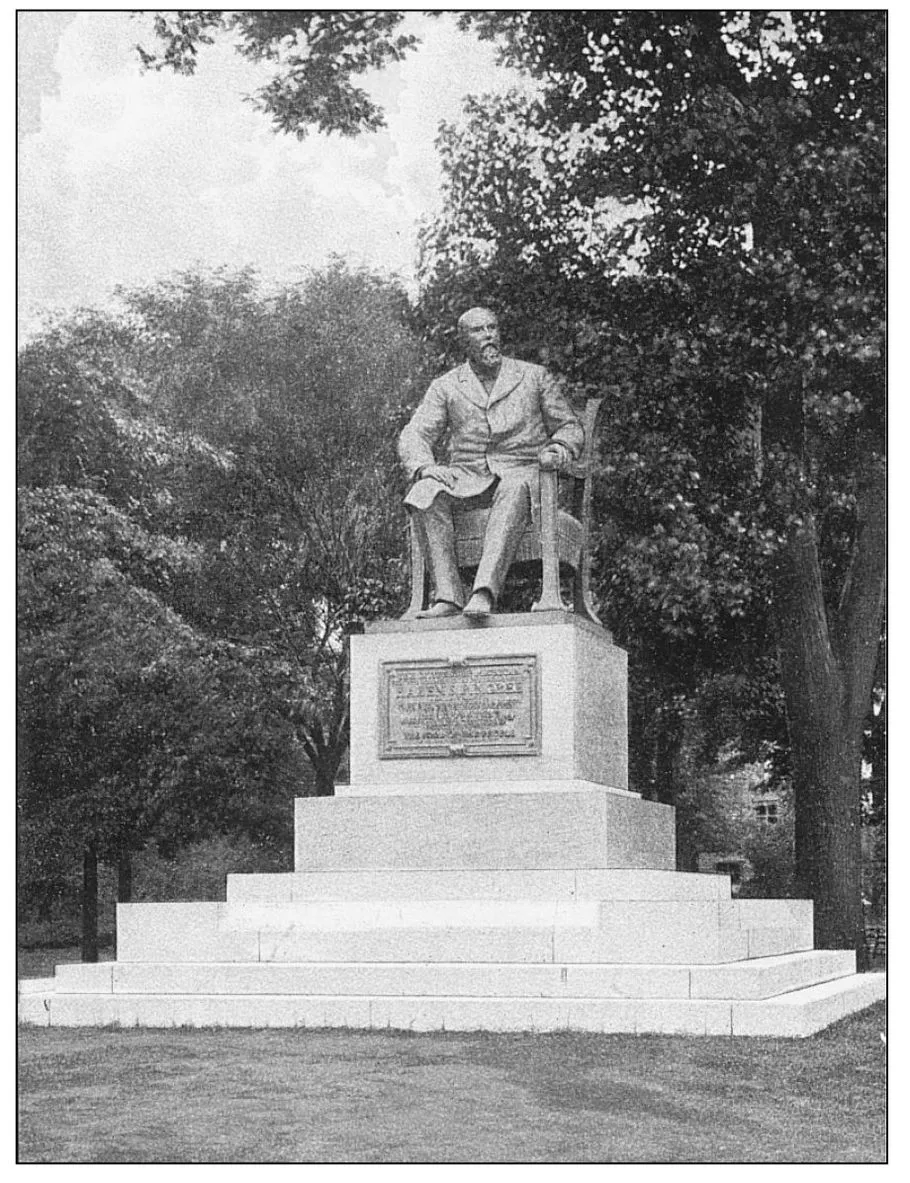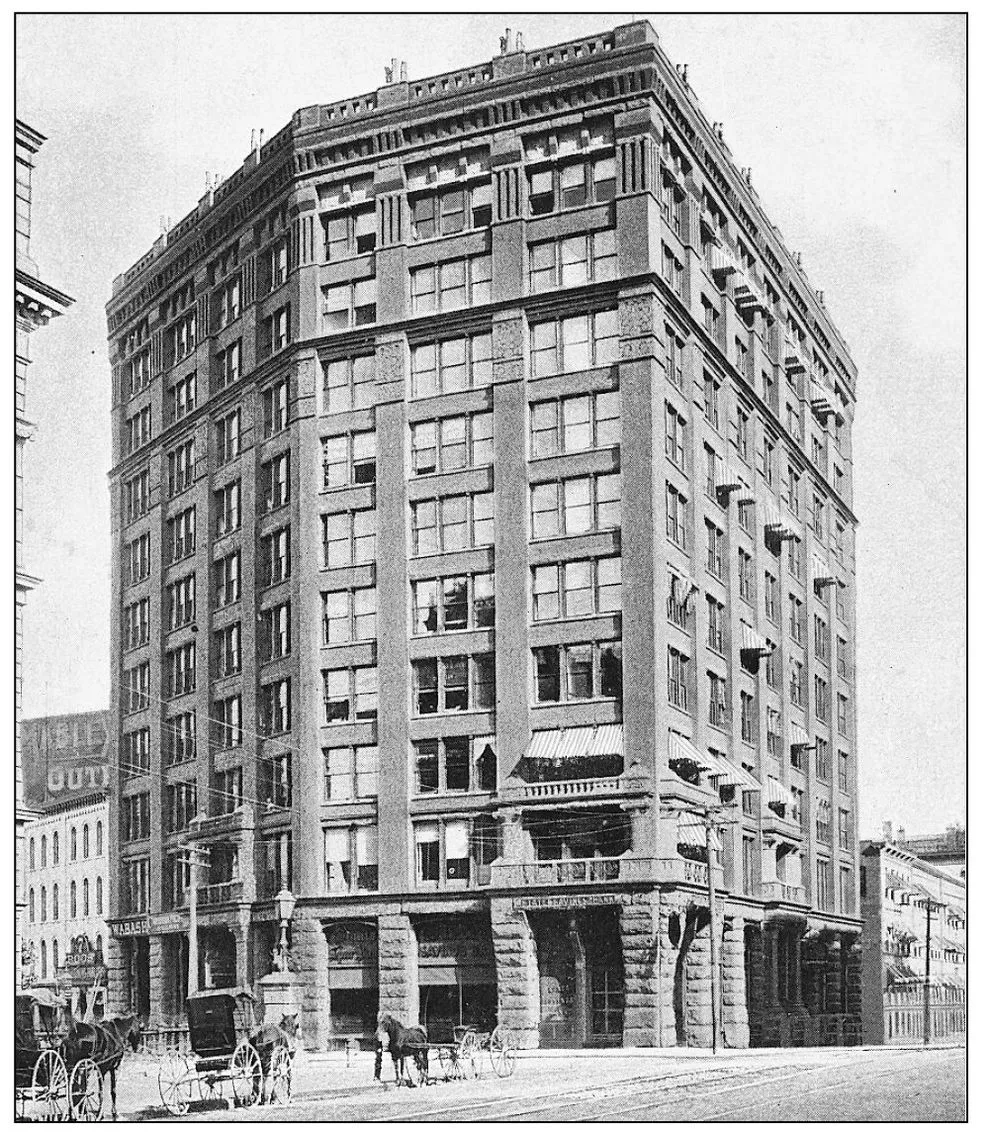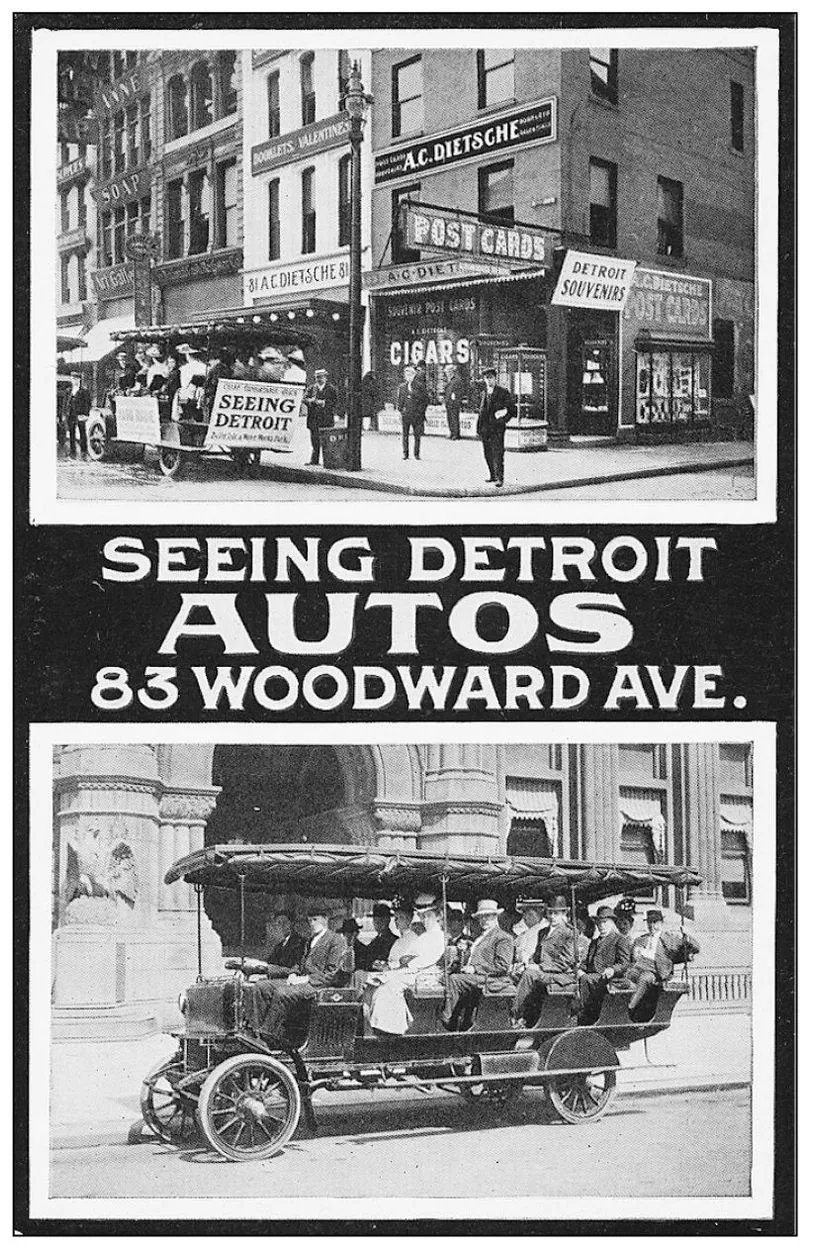
eBook - ePub
Detroit
A Postcard History
Richard Bak
This is a test
Condividi libro
- 128 pagine
- English
- ePUB (disponibile sull'app)
- Disponibile su iOS e Android
eBook - ePub
Detroit
A Postcard History
Richard Bak
Dettagli del libro
Anteprima del libro
Indice dei contenuti
Citazioni
Informazioni sul libro
View evocative and historical images in postcards from the early days of Detroit.
Postcard photographers traveled the length and breadth of the nation snapping photographs of busy street scenes, documenting local landmarks, and assembling crowds of neighborhood children only too happy to pose for a picture. These images, printed as postcards and sold in general stores across the country, survive as telling reminders of an important era in America's history.
Domande frequenti
Come faccio ad annullare l'abbonamento?
È semplicissimo: basta accedere alla sezione Account nelle Impostazioni e cliccare su "Annulla abbonamento". Dopo la cancellazione, l'abbonamento rimarrà attivo per il periodo rimanente già pagato. Per maggiori informazioni, clicca qui
È possibile scaricare libri? Se sì, come?
Al momento è possibile scaricare tramite l'app tutti i nostri libri ePub mobile-friendly. Anche la maggior parte dei nostri PDF è scaricabile e stiamo lavorando per rendere disponibile quanto prima il download di tutti gli altri file. Per maggiori informazioni, clicca qui
Che differenza c'è tra i piani?
Entrambi i piani ti danno accesso illimitato alla libreria e a tutte le funzionalità di Perlego. Le uniche differenze sono il prezzo e il periodo di abbonamento: con il piano annuale risparmierai circa il 30% rispetto a 12 rate con quello mensile.
Cos'è Perlego?
Perlego è un servizio di abbonamento a testi accademici, che ti permette di accedere a un'intera libreria online a un prezzo inferiore rispetto a quello che pagheresti per acquistare un singolo libro al mese. Con oltre 1 milione di testi suddivisi in più di 1.000 categorie, troverai sicuramente ciò che fa per te! Per maggiori informazioni, clicca qui.
Perlego supporta la sintesi vocale?
Cerca l'icona Sintesi vocale nel prossimo libro che leggerai per verificare se è possibile riprodurre l'audio. Questo strumento permette di leggere il testo a voce alta, evidenziandolo man mano che la lettura procede. Puoi aumentare o diminuire la velocità della sintesi vocale, oppure sospendere la riproduzione. Per maggiori informazioni, clicca qui.
Detroit è disponibile online in formato PDF/ePub?
Sì, puoi accedere a Detroit di Richard Bak in formato PDF e/o ePub, così come ad altri libri molto apprezzati nelle sezioni relative a History e North American History. Scopri oltre 1 milione di libri disponibili nel nostro catalogo.
Informazioni
Argomento
HistoryCategoria
North American HistoryTwo
AROUND THE TOWN

THE HUB OF DETROIT. In 1807, two years after a disastrous fire destroyed Detroit, territorial magistrate Augustus B. Woodward designed a spoked street layout for the rebuilt city. Only a portion of his grandiose vision was realized, including Campus Martius (pronounced MARSH-ess), originally a park on lower Woodward Avenue at which Woodward Avenue, Michigan Avenue, and Monroe Street presently intersect. The Latin name means “military park” and refers to the Campus Martius of ancient Rome, an area used for military drills.

WOODWARD AVENUE, C. 1904. Detroit’s main street, which begins at the Detroit River and extends northward toward Pontiac, was named for Judge Woodward. By the late 19th century the former toll road had become a grand avenue of fashionable homes and stately churches, though unimpeded commercial growth continued to push residents farther north of the city center. By the 1920s, the soot, noise, and congestion brought on by the emerging metropolis had irreversibly changed Woodward Avenue’s character.

GRAND CIRCUS PARK. Integral to Judge Woodward’s vision were regularly spaced public spaces known as “circuses,” designed to provide sylvan respites for city dwellers. Ultimately most of Woodward’s baroque plan was abandoned or scaled back. However, a remnant, Grand Circus Park at the intersection of Woodward and Adams Avenues, was set aside by the city in 1854. Its shade trees have since helped cool generations of Detroiters.

POTATO PATCH PINGREE. Grand Circus Park contains one of the city’s most familiar landmarks, the statue of former mayor Hazen Pingree. The progressive Pingree, who served from 1890 to 1896 before resigning to become governor, gained national renown for turning vacant plots of land into vegetable gardens for the needy. The statue was dedicated on Memorial Day 1904, three years after “Potato Patch Pingree” died unexpectedly in England.

A BLOOMING BOAST. One of the more eye-pleasing aspects of Grand Circus Park during the warm-weather months was watching the message, “In Detroit Life Is Worth Living,” blossom in its giant flower bed. Few disputed the boast as the city continued to grow in population and prestige through the 1920s.

CAPITOL SQUARE PARK, C. 1909. This pie-sliced piece of greenery north of State and Griswold Streets originally was the site of Michigan’s territorial capitol, which in 1863 was converted into Detroit’s first high school. A fire destroyed the building in 1893, after which the land became a park. In 1905 the body of Michigan’s first state governor, Stevens T. Mason, was laid to rest there. A statue was dedicated in 1908.

DETROIT’S FIRST SKYSCRAPER. The 11-story Hammond Building at the southeast corner of Griswold and Fort Streets was considered a “wonder of the world.” Originally conceived by George Hammond, who’d made his fortune building refrigerated railroad cars, and completed by his widow after his death, the $750,000 skyscraper was one of the largest masonry structures in the country when opened in 1890. To celebrate, a high-wire performer walked a cable from its roof to a tower of nearby city hall.

A TALL ORDER. Merchant king Christopher R. Mabley had only one order when designing his own skyscraper at Michigan and Woodward Avenues: “Never mind the expense, but be sure it’s higher than the Hammond Building.” Like Hammond, Mabley died before his dream was completed in 1896. The new owners, not wanting to waste the initial “M” placed on the capstone and hundreds of doorknobs, named the 14-story structure the Majestic Building. It was demolished in 1961, five years after the Hammond Building.

SELLING DETROIT. A.C. Dietsche, located at 83 Woodward Avenue, offered sightseeing tours, postcards, souvenirs, and practically anything else of interest to the out-of-town visitor, back in the days when Detroit was a major tourist destination.

GUIDED TOURS. Sightseeing buses gave visitors a quick, restful, and i...